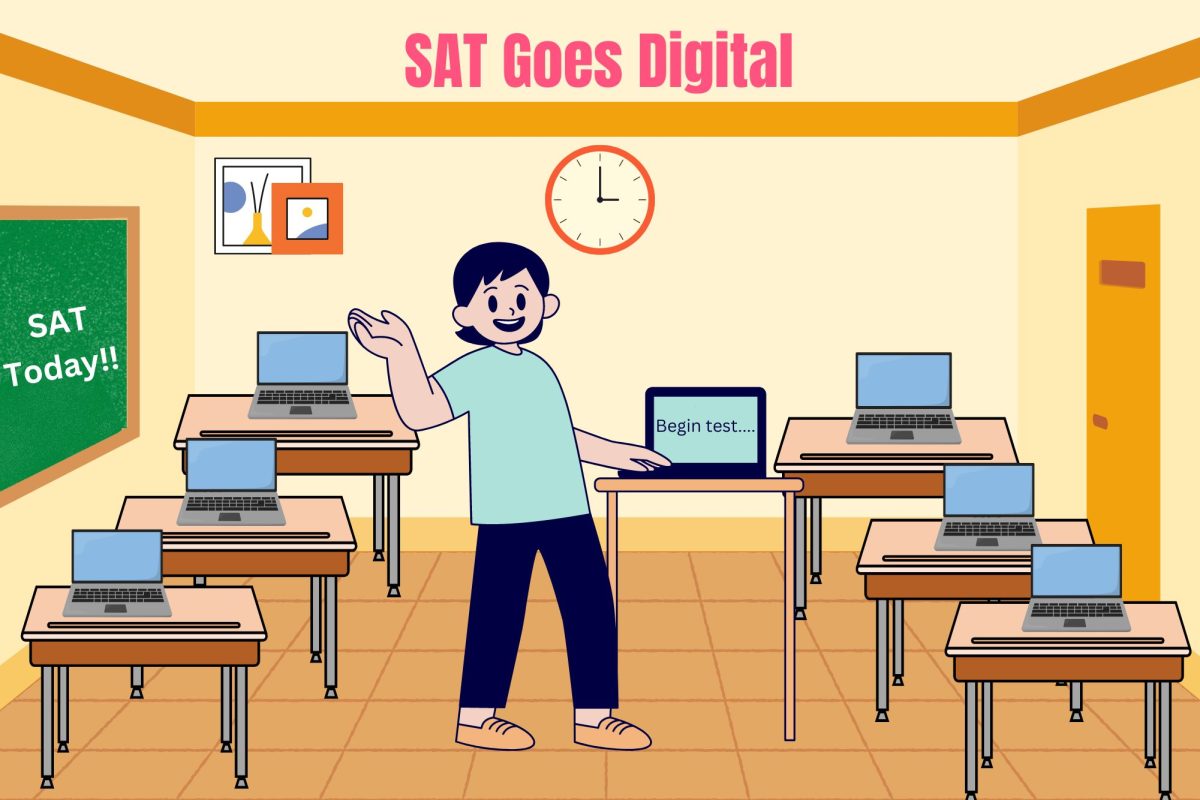Beginning in spring 2024, all students will take the full SAT Suite of Assessments, including the SAT, PSAT/NMSQT, PSAT 10 and PSAT 8/9, digitally.
Typically taken during one’s junior or senior year in high school, the SAT is a standardized test used to help colleges make admission decisions in the United States. As of 2023, however, more than 1,800 accredited four-year colleges and universities have eliminated the requirement to submit SAT or ACT scores from their admission criteria. That said, one can still submit scores to test-optional colleges, but won’t be penalized for choosing to omit standardized test scores. For the schools that still require such test scores for admission, performing well on the SAT can bolster one’s application.
Given the SAT’s weight in the college admissions process, its transition to fully digital has had mixed feedback from UHS students.
Students will take the SAT on a laptop or tablet, be it personal or a school-issued device. If a student does not have access to a device, they must request to borrow one from the College Board.
“Even though a student may be able to borrow a Chromebook from their school to take the SAT, Chromebooks often don’t function well, so someone taking the test on a Macbook, for example, will have a better experience overall,” junior Shuba Senthilkumar said. “There are just so many technological problems that can occur the day of the test with the SAT being digital now.”
The digital SAT will be substantially shorter than the three-hour fifteen-minute paper SAT, with its total time being around two hours. It will feature shorter reading passages as well, with one question associated with each. Students will be able to use calculators for the entire Math Section and scores will be provided in days, rather than weeks.
“I think the shorter time will help with better concentration and comprehension, especially given the tedious nature of test-taking for hours on end,” junior Jane Sorto said. “The fact that the digital SAT will now be adaptive also allows for a more individualized testing experience, although I do feel that not knowing how difficult the next section of the exam could amplify test anxiety.”
Adaptive testing means getting more correct answers does not necessarily entail receiving a higher score on the digital SAT. Students who perform well in Module 1 of the test are given more challenging questions in Module 2 but can answer fewer questions correctly to earn a high score. Essentially, the test’s difficulty is altered in real-time based on one’s performance; questions get increasingly difficult if a student performs well, while they get easier if they do not.
“Based on the PSAT, it seems that the paper SAT is more difficult than the digital SAT, and the digital SAT could be beneficial due to its adaptability feature,” junior Niklaus Jafary said. “We will have to see how the digital SAT is perceived in the future, as an official digital SAT has not been released yet.”
Despite varying opinions about the matter, both domestic and international students will soon dive head first into digital SAT testing this upcoming year. After being on paper for decades, the last paper SAT was administered on Dec. 2, 2023, officially kickstarting the transition to fully digital standardized testing; ending the year with a bang, indeed.






![“The amazing science club, unite[s] to experiment new ways to grow their knowledge” Miles Hexun said.](https://uhsswordandshield.com/wp-content/uploads/2024/11/IMG_5875-e1731965934409-1200x723.jpg)




